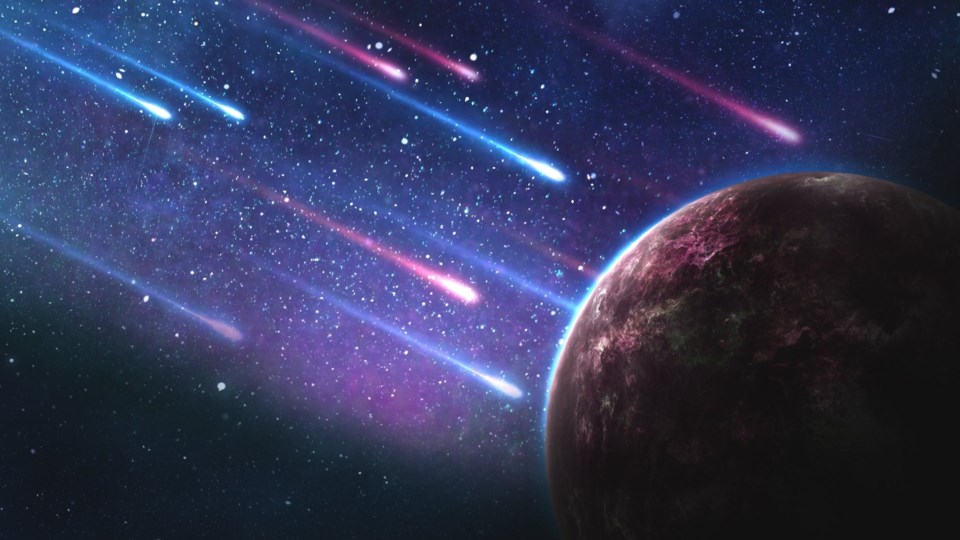Nothing can quite compare to the natural beauties of the sky. From Sunsets to glistening stars, the vast blue sky encasing a sea of puffy clouds, whether night or day we can find ourselves gazing up into the unknown soaking up the view like a sponge. Though the sun and moon has never failed to rise and set in place, special occasions can generate new awe if caught at the right moment as coming up on December 13th is the peak of the annual Geminid meteor shower.
This wondrous attraction is said to begin around 7PM and stretch out until morning producing up to 120 meteors per hour with some bright fireballs.
Annual meteor showers are produced when the Earth crosses debris fields from comets as we orbit the sun, this is why various showers occur at the same time each year. In the case of the Geminids, Earth will encounter tiny sand-sized particles with some gravel size pieces producing bright dramatic fireballs that will light up the sky as well as the ground.
This particular blazing comet is actually an astroid; or a dead comet, under the name of ‘3200 Phaethon’ which will shower the galaxy with bursting debris giving us the one of the best meteor showers of the year, even better then the Perseids in August.
The meteors will harmlessly vaporize roughly 80 kilometres above the ground at a slow 35 km/sec compared to the Perseids at twice that speed. As Comets shoot through space, a collection of rock and other particles freeze to it’s self creating a larger frozen ball of rock and carbon dioxide. As the comet nears the sun, the ice quickly transforms from a solid to a gas making a long smoking trail and breaking the debris.
These dazzling sights are primarily coming from the constellation featured in the direction of the Northern Hemisphere; Gemini, which even though this galactic event can be witnessed Globally, those located in the winter regions should get the front seat view.
A few meteors can be seen starting at about 7 pm, but as the night continues Gemini will get higher and higher with each passing hour in the Northeast. Greater numbers will be seen as the constellation rises throughout the night. Approaching 1-2AM the umbrella effect of more rapid comets blasting across the atmosphere can be witnessed at a much greater level.
Gary Boyle, known as the ‘The Backyard Astronomer’, astronomy educator and free lance astronomer expresses his life long journey on studying the stars since he was only 8 years old. To a young boy hearing statistics on the infinite space and the thrilling facts that like a string of pearls, you can line up 109 earths side by side across the sun’s disk with 1.3 million of our worlds fitting within. This sparked a life long fascination with Boyle that he’s carried on these past 57 years.
Boyle is also a monthly columnist for the Royal Astronomical Society of Canada as well as a STEM (Science Technology Engineering and Mathematics) educator. He has been interviewed on more than 55 Canadian radio stations as well as various television stations across Canada and the U.S. In recognition of his public outreach in astronomy, the International Astronomical Union has honored him with the naming of Asteroid (22406) Garyboyle.
As Boyle has further taught this matter, faces of all ages brighten up with curiosity, but never as much as when solar events are glimpsed in person making a memory burn in their minds they will not easily forget.
“I could show you video’s of meteor showers” says Boyle, “But until you see that fireball light up the ground for yourself, it’s something you can’t forget”
With the night prior to this event (Dec. 12) being a New Moon, this should make for a blackened sky on the 13th, perfect for one such meteor shower to be seen vividly.
With Christmas around the corner and those of us who have not yet completed the last minute shopping, Boyle also gives educated advice on buying a proper telescope, advising to first and foremost avoid all box stores and check out reliable online dealers such as Ontario Telescope and Accessories for a quality instrument. Cheaper telescopes will most likely end up in your next spring garage sale. A good starter model would be the Sky-Watcher Classic 200P.
When something as spectacular as these dancing fireballs shimmering across the sky takes place scarcely, it’s strongly encouraged to join in the excitement and step outside your doors bundled up in your winter best to take in some of the breathtaking natural scenes displaying before the human eye. A phenomenon that has sought interest of kings and the curios minds since the beginning of time.
~Matthias J. Johnson is a Local Journalism Initiative reporter who works out of the Thompson Citizen. The Local Journalism Initiative is funded by the Government of Canada.




